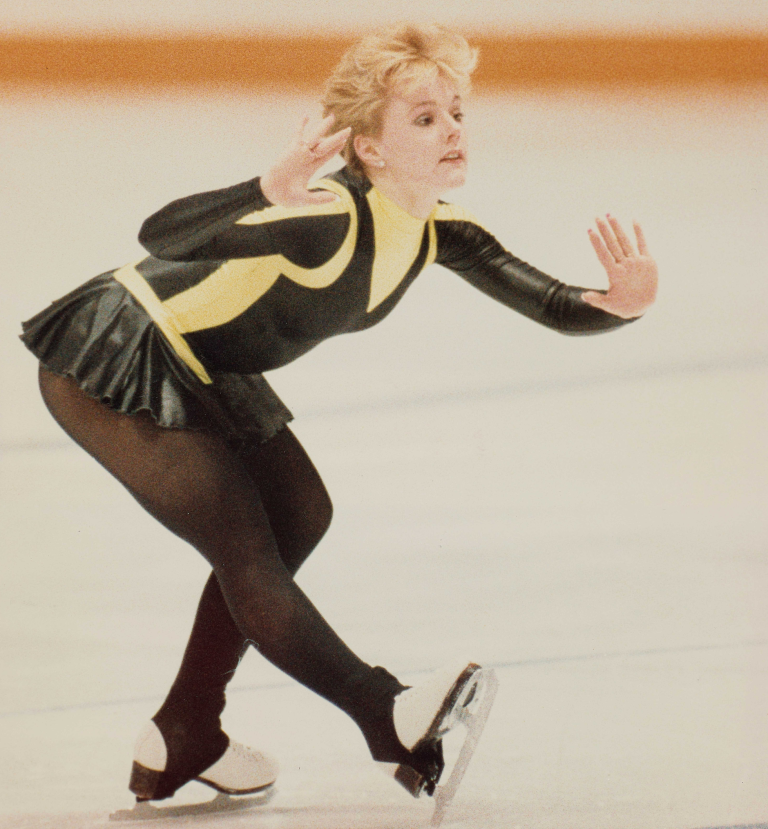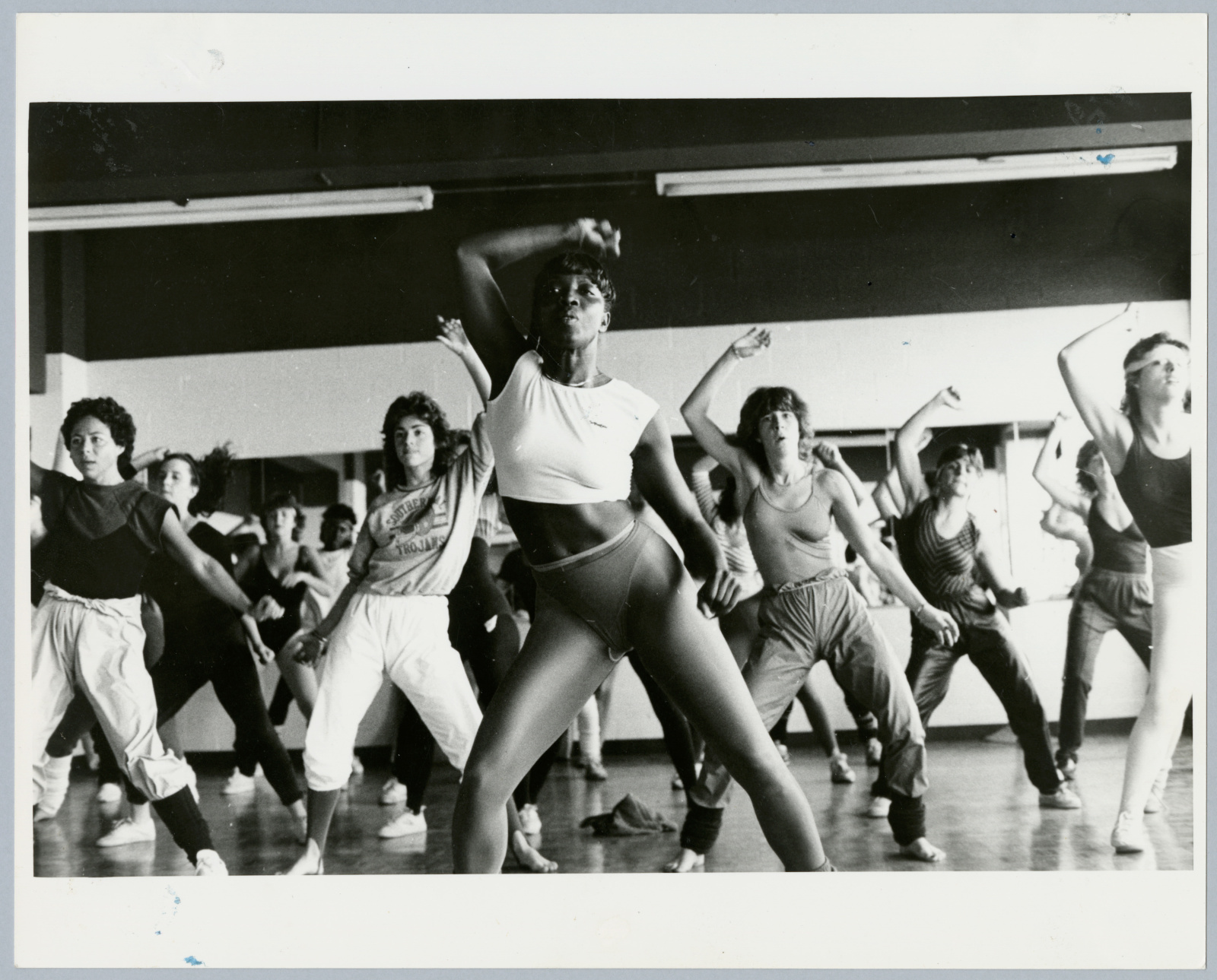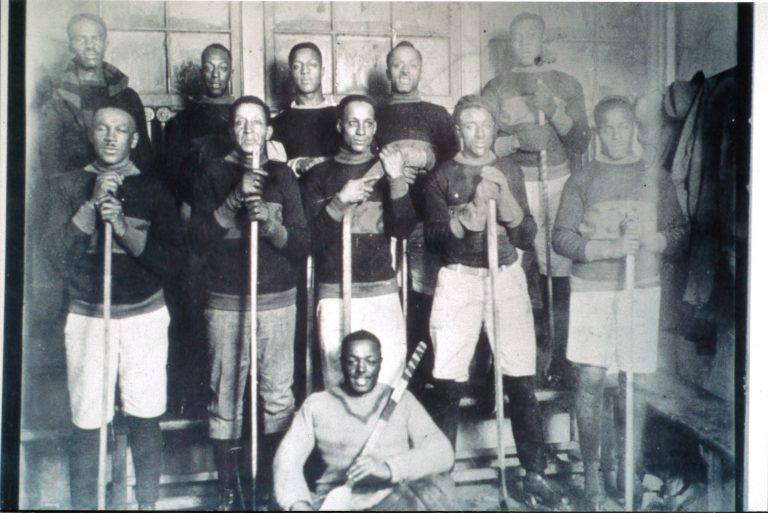Nav Bhatia made history as the first basketball fan to be inducted into the NBA Hall of Fame. He’s widely known as the Toronto Raptors “Superfan,” and his Superfan Foundation helps bring basketball to underserved communities across Canada.
Fans are a huge part of the history and experience of sports. The Museum recently acquired a bobblehead of Nav to help tell the story of basketball, a sometimes-overlooked Canadian sport, and to illustrate the dynamism and diversity of sports fans and culture.
Coming to Canada and to basketball
Nav wasn’t always a sports fan. His early years in Canada as a new immigrant were devoted to hard work. He recalls, “I came in ‘84, and from ‘84 to ‘93, first eight, nine years, I didn’t want any sports. I didn’t have any hobbies because I was trying to sort of settle down. You know, when we immigrants come, our first thing is to settle down and have a roof, on our head, that’s all of us.”
A decade later he was more comfortable, but he realized, “I have no hobbies. I’m a boring guy. I only do three things — work, more work and more work.” So, he decided to check out basketball. The Raptors had just arrived in Toronto, and he bought season tickets, figuring at worst he wouldn’t renew them. As it turns out, it was a match made in heaven: “Lord, behold, I fell in love with the very first day of the game. And, you know, since then, I’ve never, never missed a game.”
For the next 25 years — until the COVID-19 pandemic upended professional sports — Nav maintained a perfect home-game attendance record. But Nav wasn’t just a steadfast attendee. His enthusiastic charisma, cheering and expressive devotion to the home team drew attention and acclaim.
In 1998, Raptors management dubbed him the “Superfan” and presented him with a special jersey. In 2021, Nav was inducted into the NBA Hall of Fame.
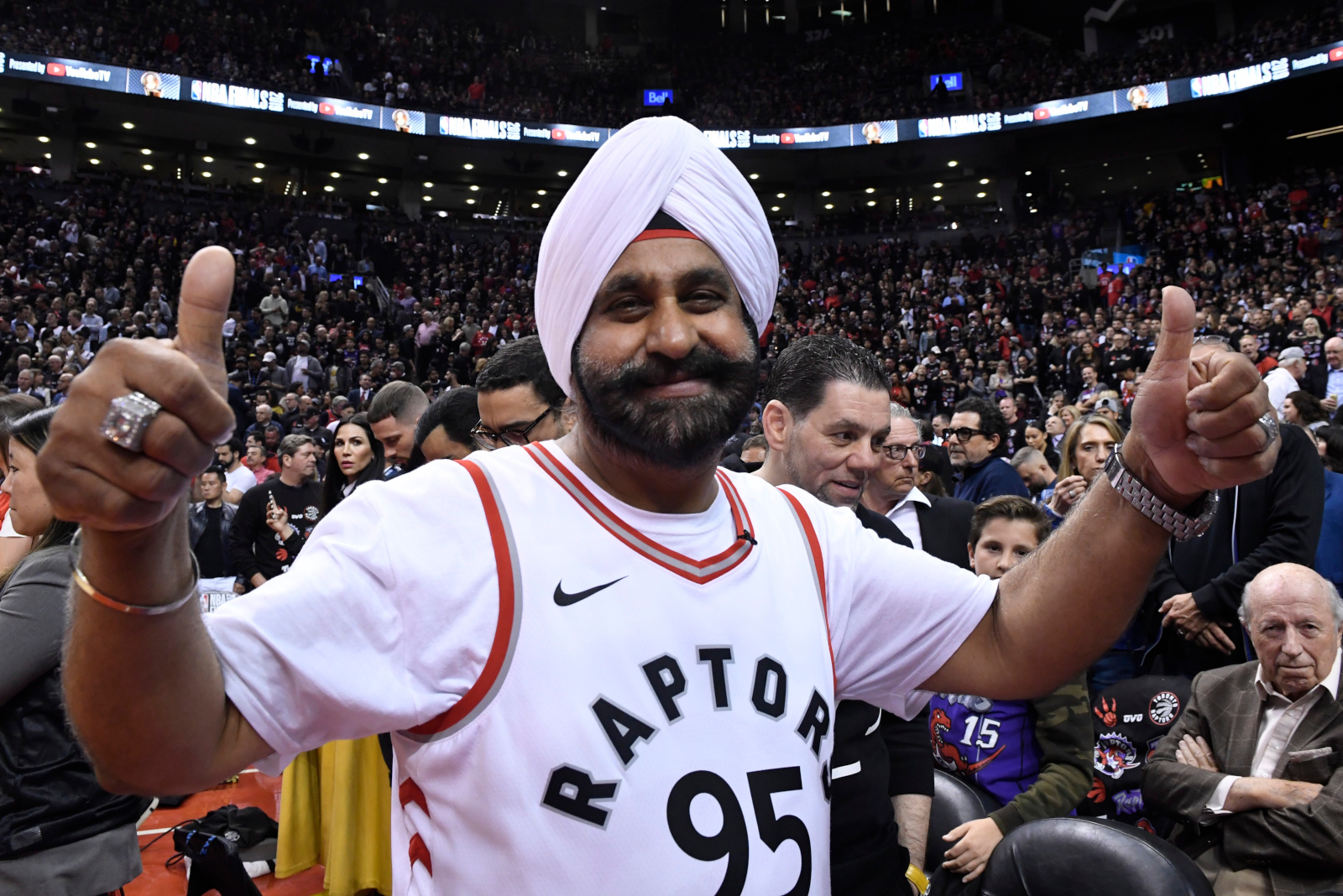
Toronto Raptors superfan Nav Bhatia before Game 1 of the NBA Finals between the Raptors and the Golden State Warriors in Toronto on Thursday, May 30, 2019.
The Canadian Press
Fandom and sports culture
Sports are an important aspect of Canadian history and culture, and fans are an important part of sport. Museum curator Sarah Barnes says, “We’re really excited to think about sports not only in terms of athletes and sports stars, but also the people who support them.” Nav, she says, “is a different type of sporting hero.”
It’s tempting to think about sports in terms of the wins and losses that make it into the record books. But sports are an important part of the lives of millions of fans. What it means to be a fan is constantly changing along with other aspects of Canadian culture. Barnes says, “Part of what we’re trying to do is tell more interesting and fuller stories about sport. And so that means really turning to who’s following sports and challenging expectations about who sports fans are and who really can find a sense of belonging in sports.”
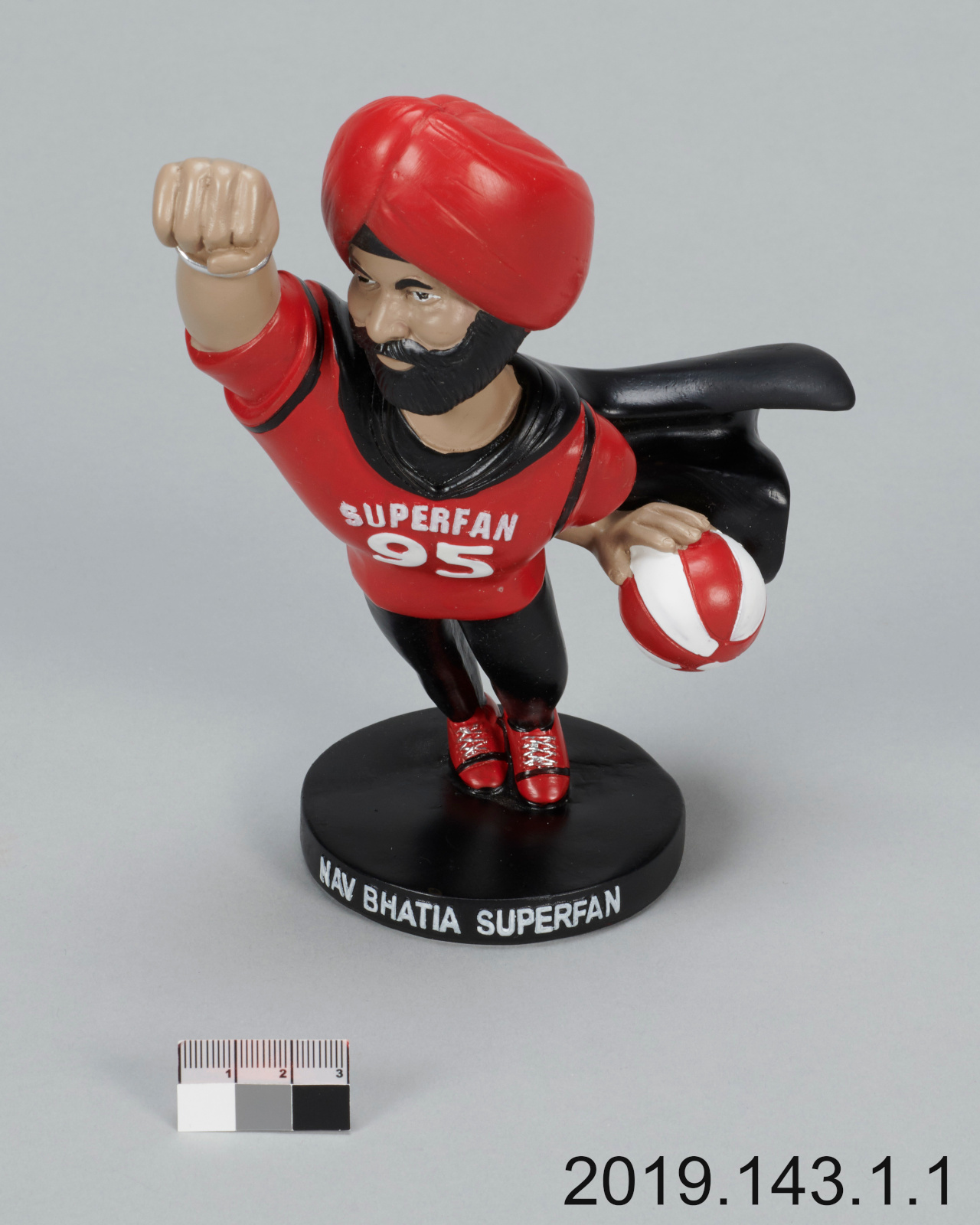
Sports bobbleheads usually represent athletes. The Nav Bhatia bobblehead shows that fans are also an important part of sport culture and history.
Canadian Museum of History, 2019.143.1.1
Racism and representation
Nav arrived in Canada in 1984, escaping an upsurge in persecution against Sikhs in India. He found relative safety in Canada, but nonetheless experienced considerable racism based on his skin colour and culture — especially his turban. He recalls: “When I started my job in 1984 as a car salesman, there were nine, ten Caucasian salespeople. And when I entered, they start calling me names. ‘They are wearing a diaper.’ Or, ‘You are a flying carpet guy,’ and all that.”
When he discovered his beloved Raptors, he recalls, “I was only one of very few Indians or Pakistanis who were going to the game.” But things have changed. “Now, if you go to a basketball game in Toronto, you have at least, I would say, a thousand people from our community.”
And the NBA recognizes the importance of a diverse fanbase. This includes celebrating various cultures during halftime entertainment. Nav recalls, “I was the first one to do an entertainment performance during the halftime depicting and showing off our culture. And now you see all the other 29 teams are doing a similar cultural night: Indian night, South Asian night, Punjabi night. They’re all doing it.”
Nav says that Canadian society has become more accepting than it was in the 1980s. “I think the racism is less now. But we have still some work to do and we should continue doing and make this country a better place than it is right now.” He believes that kindness and teamwork are still the best ways to unite people. “You know,” he says, “a good team member is the one who leaves the place better than it was. And I’m trying to do that. And I would ask everybody to do that.”
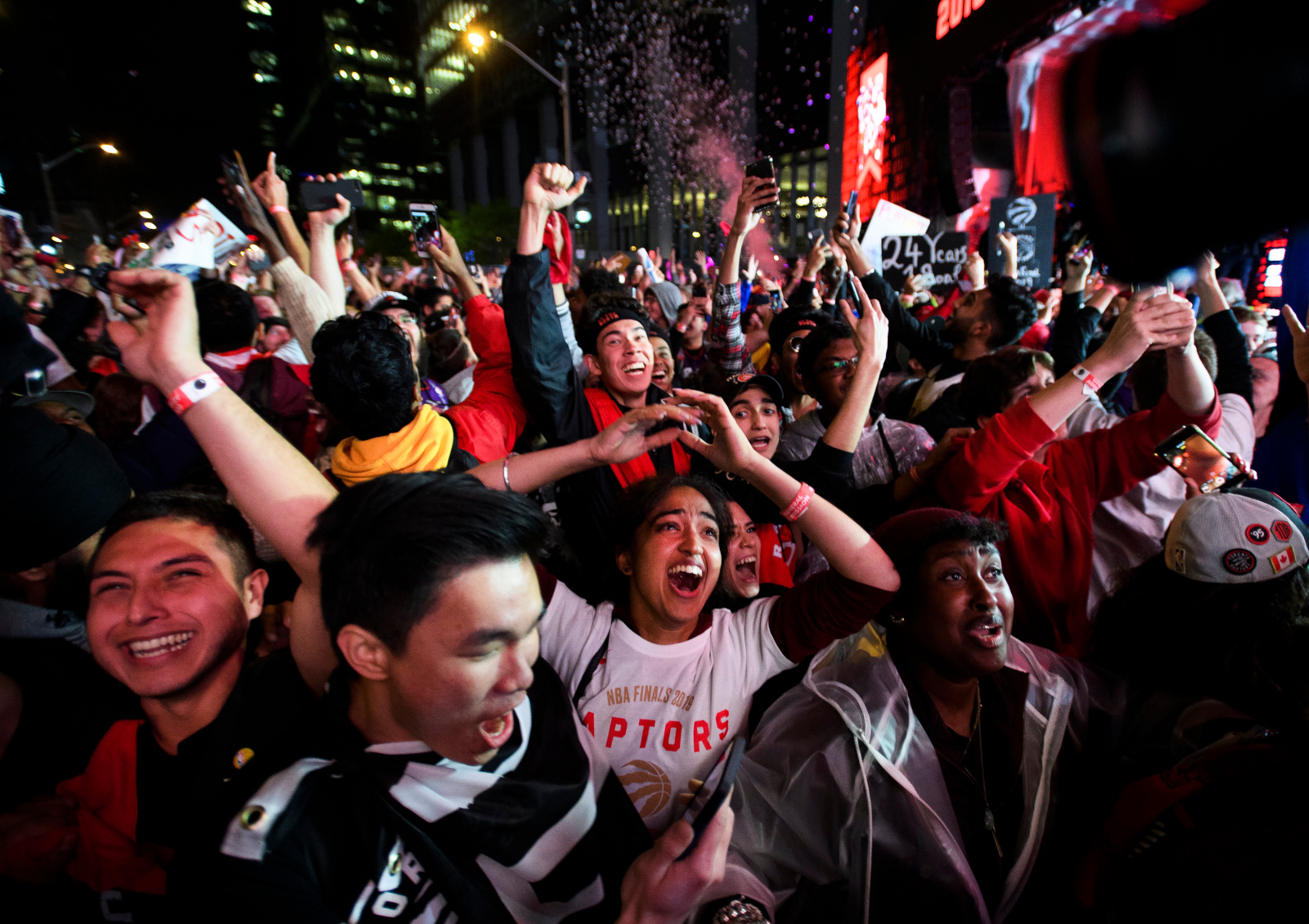
Being a sports fan is an emotional and communal experience. Fans react as the Toronto Raptors win the NBA Championship on Thursday, June 13, 2019.
The Canadian Press
Fandom and fun
Nav isn’t just an icon of inclusion and diversity. He’s also a joyful and emotional icon of what it means to love a sports team. Barnes says, “He’s got a lot of passion. He’s a vibrant fan. He rides the highs and lows of sports — because part of what draws people into sports is the drama, the stories, the excitement. I think he’s probably expressing what a lot of people may be feeling in the stands.”
The bobblehead in the collection of the Canadian Museum of History captures this sense of fun and playfulness. It also bears witness to the fact that a Sikh immigrant who routinely endured racist taunts in the 1980s is now famous as an ambassador for the inclusiveness, joy and community-building power of sports.
Listen to Nav’s episode of Artifactuality to hear more about his life, his love of community-building, and the importance of sports in telling the stories of Canada.
Download and subscribe to Artifactuality wherever you get your podcasts.

Steve McCullough
Dr. Steve McCullough is the Digital Content Strategist at the Canadian Museum of History and the Canadian War Museum. His work in digital storytelling involves compassionate and evidence-based efforts to address history, meaning and identity in our fragmented and polarizing, but also vibrant and interconnected, online environment.

